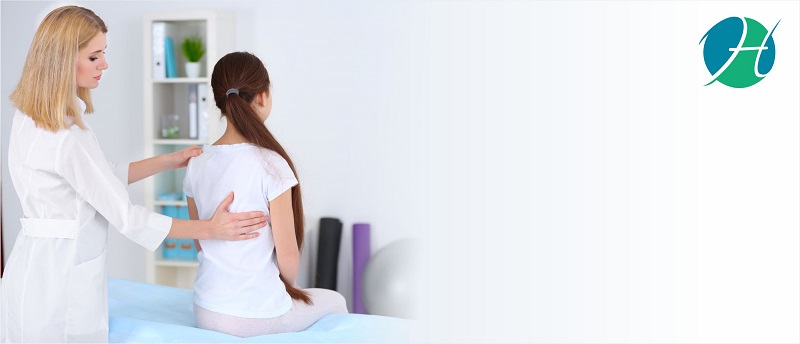Correcting Posture for Immediate Relief and Long-term Health

Older generations can testify that when growing up, adults often insisted that kids “sit up straight!” Slouching was frequently chided, but not necessarily with concern for health. Poor posture was considered a hallmark of low confidence and, at times, a sign of disrespect. Perhaps it can still be both; however, in this more health-conscious age, most health experts recognize that good posture can address, eliminate or even prevent spinal and muscular issues, among other symptoms and disorders.
Poor posture is a fairly common condition, especially for younger teens and adults, who may need the training to maintain a healthier carriage. On the other hand, disease and developmental conditions can also cause posture issues. Both of these scenarios can lead to related health problems.
Health Conditions Caused by Poor Posture
Hunching over laptops, gaming consoles, and even phones for long periods is helping make poor posture a new normal, along with the symptoms and conditions often caused by it. Some of these symptoms include:
- Spinal or skeletal misalignment
- Difficulty breathing, leading to low energy
- Difficulty digesting food
- Less flexibility
- Less mobility and rotation in joints
- Chronic shoulder, neck and back pain
- Headaches
- Worn spinal discs
- Poor circulation, which can lead to cardiac issues
- Neurological issues such as limb numbness or bladder and bowel control
Along with these physical symptoms, a study at San Francisco State University concluded that poor posture can even negatively affect one’s mental health, contributing to negative feelings and even depression.
It’s reasonable to conclude that the sooner poor posture is addressed in a person’s life, the less potential damage and discomfort. Developing good posture can be a part of habit and sometimes part of medical science. Many posture-correcting devices can address helping a sufferer train themselves to correct their posture as a habit while giving relief from poor posture in the meantime.

Correcting Posture Brace
Posture braces are made to help retrain your body to develop proper posture. Finding a brace that is comfortable can ease the immediate strain while teaching muscle memory, so the patient gets a feel for good posture. In the long run, it’s recommended that the brace act as a temporary supplement to posture exercises to prevent a weakening of muscles that grow dependent on the brace.
Posture-Correcting Bra
A woman suffering from poor posture issues might be more comfortable with a posture-correcting bra, as opposed to a brace, especially if she is large busted. The concern is finding a bra that corrects as well as some braces might be a challenge. While they may provide some immediate strain relief, posture-correcting bras can lack good structure necessary to effectively train for future good posture, and thus lose most of their benefit in the long run.
Other Posture-Correcting Devices
There are several devices often used with success as supplements to posture-correcting garments. These may address home or work environments, or act as tools to aid with a posture-correcting exercise regime.
- Monitor document clips – Holds documents up to eye level from the side of a monitor to encourage sitting higher when at a computer.
- Standing desk – The idea that standing provides less stress than sitting for hours during the day has proven useful for many with poor sitting posture. Having an adjustable height would make a standing desk more useful.
- Foot mat – Intended to be used with a standing desk, having extra cushion to stand on can help one grow less tired for longer periods.
- Foot rests – For those who opt-out of the standing desk, raising your feet while sitting can prove as a relief and sitting posture correction. Portable footrests can be used as needed.
- Lumbar supports – If your office chair isn’t built to be ergonomic for the lower back, a mesh insert that straps on the inside of the lumbar area of the chair can give relief and support for longer sitting and good posture.
- Posture and neck pillows – There are many orthopedic sleeping pillows on the market, especially constructed to support the spine with correct neck and head alignment in bed. These often require sleeping in a specific position, so they don’t work as effectively for everyone.
- Foam rollers and resistance bands – While rollers can be used with some pressure across sore muscles to alleviate pain, they are also used in stretching exercises. Resistance bands focus on exercises that help the user become more body-conscious, helping to train the body to develop and hold better posture unconsciously.
- Posture-correcting sensors – For those who forgo training braces and bands, small electronic sensors are becoming more widely used to send data regarding your posture habits to a phone app, including alerts to adjust positions.

Benefits of Correcting Back Posture
In general, good posture is mostly about helping your spine maintain its healthy shape and position, following the three natural curves of your neck, mid and lower back. Correcting poor posture can reduce pain and discomfort, promote increased energy, prevent worse injury and allow for more comfortable physical activities, which can promote even more health and mental well-being.

